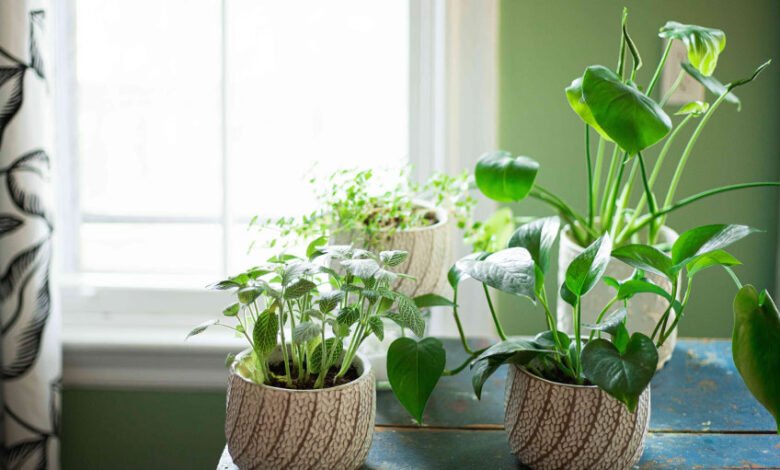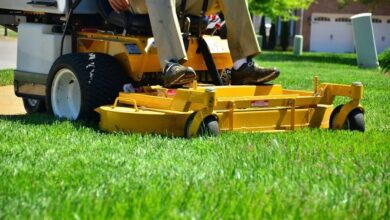Maximize Garden Beauty with Plants Thriving in the Afternoon Sun

Gardeners know that proper sunlight is crucial for growing vibrant, healthy plants. But not all sunlight is equal. The intense rays later in the day provide unique benefits to certain flower and foliage varieties suited to handle the additional heat and light. By understanding sun-loving plants and designing gardens that capitalize on afternoon light, we can extend the daily display and create visually captivating spaces that develop character as the day progresses.
This article explores popular plants that thrive under the afternoon sun’s intense gifts. By incorporating these resilient varieties, gardens flourish longer into the evenings with dazzling patterns, colors, and textures coming alive at sunset to delight the soul.
Understanding Sun Requirements for Plants
Determining optimal sun exposure keeps treasured gardens thriving year after year. While generically categorizing plants as “sun lovers” or “shade dwellers” provides basic guidance, a deeper understanding is invaluable for making appropriate selections.
Full sun generally means at least six hours of direct sunlight daily. These conditions maximize growth and blooms but require adaptation to intense heat and light. Select plants with higher moisture needs for full sun areas to prevent stress.
Partial sun falls between full sun and full shade. Dappled sunlight filtered through tree branches or a few hours of the direct morning and afternoon sun qualifies as partial exposure. Most plants tolerate these variable conditions.
True shade implies no direct sunlight reaches an area, creating cool sanctuaries under tree canopies or on east-facing zones. Typically, delicate woodland species thrive in strictly shaded areas.
“A true gardener sees the potential in all situations – we sew seeds of patience, nourishment, and beauty.” – Nora Murphy
But even within “full sun” designations, the afternoon sun differs significantly from the morning rays. As midday approaches, light intensity peaks along with heat and humidity. Afternoons also experience more exposure as the sun tracks across the summer sky.
These climatic differences mean that while many plants relish equal morning and afternoon sun, some varieties specifically thrive off the higher light, temperatures, and extended hours of the late-day barrage.
The Benefits of Afternoon Sun for Certain Plants
For plants adapted to intense afternoon conditions, the increased light and heat keep them performing their best. Benefits include:
- Extended flowering: Some plants have sensitivity to late evening light levels, blooming heaviest in response to prolonged exposure to afternoon sun. Others require intense rays to open flowers.
- Increased growth rates: Afternoon intensity triggers key photosynthetic processes, often translating to quicker vegetative development and reproduction compared to strictly morning light reception.
- Improved flower/foliage coloration: Pigments in some flowers and leaves deepen under intense UV rays, becoming more vibrant. Others require full light spectrums to develop their distinctive hues.
- Enhanced fragrances: Warmth and light are known to amplify the essential oil components behind many plants’ sweet perfumes. Positioning them where afternoon conditions activate aromas makes time spent in the garden even more enjoyable.
- Healthier life cycles: For plants naturally adapted to hot and arid environments, the drying effects of intense afternoon exposure help ensure successful flowering and seed production. Others use the extended hours to pack on growth.
With proper medium moisture and positioning that avoids reflected heat damaging foliage, the plants below capitalize on afternoon rays’ gifts to create dazzling displays lasting through sunset and twilight.
1. Lavender (Lavandula)
Beloved for its enduring scent and charismatic flowers, few plants evoke Mediterranean landscapes like fragrant lavender. Encompassing 39 species within the flowering Lavandula genus, lavender graces gardens around the world. Native varieties originated in the sunny, dry environments of Europe and Africa’s Mediterranean coastlines.
To fuel its richly-hued blooms and prized oil production, lavender requires at least 6 hours of hot, uninterrupted full sun daily, and afternoon light optimizes both growth and essential oil development. Position plants on southern exposures away from radiant foundations or pavements to prevent foliage scorching. Well-drained soils are essential to avoid root rot issues that quickly compromise plants lacking afternoon drainage. But rich soil and frequent fertilization can diminish oil quality.
2. Rose (Rosa)
These shapely shrubs produce some of nature’s most decadent blooms, from elegant tea roses to rugged landscape types. Over 100 rose species span environments from roadside ditches to high alpine cliffs, but most garden varieties thrive under attentive growing conditions.
As sun worshippers, most roses produce their most prolific flowers when soaked in at least 6 hours of direct light daily. But the afternoon sun uniquely extends their flowering performance. Many types bloom heaviest in early summer then dwindle as daylight hours decrease. Positioning plants for intense afternoon light exposure keeps them producing robust flowers longer into the fall. Their dazzling colors also intensify under late day intensity.
Give afternoon-sun roses plenty of space for air movement and prune older canes to the ground to stimulate new growth. Targeted watering is vital, especially surrounding fragile blooms. Organic rose fertilizer supports stem vitality and flower power development.
3. Coneflower (Echinacea purpurea)
This cheerful prairie meadow native brightens gardens and vase arrangements with its bold pink-purple petals surrounding an architectural spiny center. Its rainbow of cultivars make coneflowers anchoring focal points. The entire plant also possesses medicinal antioxidant properties, especially the cone portion.
As prairie natives, coneflowers thrive with at least 8 hours of full sun for the sturdiest growth and most prolific flowering. Afternoon light is key for the most vibrant blooms and strongest stems. Insufficient sun causes floppy growth requiring staking. Well-drained, compost-amended garden beds provide essential nutrients. Once established, coneflowers tolerate drought well thanks to their deep taproot. Deadheading spent blooms improves appearance and promotes additional flowering.
4. Black-Eyed Susan (Rudbeckia hirta)
Another iconic prairie meadow resident, this golden-petaled flower with its namesake chocolate center covers fields and roadsides each summer. A mainstay of wildflower mixes, Black-eyed Susan thrives under cultivation to bring its cheerful color and natural texture into gardens. Asters and other pollinators flock to its nectar-rich blooms.
For maximal flowering and most intense golden hues, site Black-eyed Susan in zones receiving at least 6 hours of direct afternoon sunlight. Morning shade allows foliage time to slowly acclimate before peak heat hits. Too much shade stimulates floppy stalks and diminished blooms. Well-drained garden loam or sandy soils keep plants healthy but somewhat drought resistant once established. Remove spent flower heads to encourage further blooming.
“The sun does not shine for just a few trees and flowers, but for the wide world’s joy.” – Henry Ward Beecher
5. Zinnia (Zinnia elegans)
These Mexican daisy relatives charm everyone with endless color variations on their full, ruffled petals and central button-like disk florets. From dwarf bedding plants to giant cultivars rivaling dahlias, zinnias bring vibrant pops of color to gardens, containers, and arrangements through autumn frosts. Over 100 wild species exist, but most garden types derive from Zinnia elegans.
For show-stopping floral displays, situate zinnias where they receive at least 6-8 hours of hot afternoon light. Anything less results in diminished flowering and faded colors. But afternoon shade prevents stressed foliage. Garden soils enriched with compost keep plants blooming vigorously. Consistent water when top layers dry out also maintains growth and flower production. Remove spent blooms to encourage further flowering until hard fall frosts end the display.
6. Sedum (Sedum spp)
Sometimes called “stonecrop”, sedums encompass over 400 species suiting an incredible array of growing zones and site conditions. Their distinctive succulent leaves store ample water. Unique star-shaped flowers burst into bloom during summer heat. Their nectar-rich treats attract butterflies and bees while adding textural beauty to gardens. Desirable garden varieties span tidy ground covers to upright types like Sedum “Autumn Joy”.
While tolerating partial shade, sedums thrive with a minimum of 6 hours of afternoon sunlight. Their fleshy foliage and stems utilize the intense rays for actively photosynthesizing sugars to fuel exuberant growth and flowering. Too much shade diminishes plant performance. Well-drained soil is essential to avoid stem rots in humid mid-Atlantic gardens. Once established, sedums withstand drought impressively. Divide congested plants in early spring or start new ones from cuttings.
7. Salvia (Salvia spp.)
This beloved genus contains over 1000 species across a diversity of forms, with garden types featuring fragrant leaves and brightly-colored tapering flower spikes attracting hummingbirds. Native to Mediterranean areas, Central America, and South America’s Andes region, salvias range from tender tropicals to fully hardy types. The unifying factor for growing these gems comes down to proper sun exposure.
To fuel prolific blooms and vigorous growth habit, site salvias where they receive at least 8 hours of direct sun, ideally with afternoon exposure. Morning shade prevents leaf scorch but midday intensity sparks blooming. Too much shade causes lanky, stunted plants with diminished floral displays. Fast-draining soils are essential for healthy root zone respiration and preventing diseases. Periodic fertilization and pruning maintain plants for years of beauty. Salvias make excellent container plants if properly sited and watered.
8. Daylily (Hemerocallis)
Few perennials rival daylily’s combinations of diverse flower forms and colors on carefree plants beloved by bees and butterflies. Named for the impressive yet short-lived blooms each morning, reblooming daylily cultivars extend floral display for months under optimum culture. Beyond endless hybrids, 15 wild species exist across East Asia where rains punctuate seasonal dry periods.
Daylilies thrive with consistent all-day sun. Select locations receiving morning rays yet protection during hottest part of the day. Avoid pitching western sun exposure. Soil enriched with abundant organic material retains enough moisture between rainfalls without staying too wet. Established plants tolerate dry spells but flower best with consistent average moisture. Dividing mature clumps every few years revitalizes their performance. Remove spent blooms to direct energy into buds and rhizome growth.
9. Marigold (Tagetes)
These stalwarts have graced gardens for centuries with their tough-as-nails mounds blanketing the ground with vibrant flowers until frosts end their display. Easy to grow from seed, marigolds range from petite edgings to giant monster blooms almost as wide as dinner plates! Beyond visual beauty, interplanting marigolds repels harmful nematodes.
For maximum flowering and deepest hues, marigolds require at least 8-10 hours of direct sunlight daily with intense afternoon rays. Those blazing conditions ensure continual bud development. With too much shade, plants produce few blooms and very limited color intensity. Average to lean garden soils allow for good drainage and moisture control. Avoid overwatering and sites lacking drainage to limit disease vulnerabilities. Pinch plants early on to encourage bushy plants laden with buds.
10. Lavender Cotton (Santolina chamaecyparissus)
Sometimes called “gray santolina”, this mounding Mediterranean native makes an ideal front-of-border subject with its fragrant silvery foliage accented by vibrant yellow button flowers waving atop wiry 18-inch stems. Tidy and drought tolerant once established, its silvery sheen nicely contrasts darker green companions. The essential oils behind its Mediterranean herbal fragrance also help deter garden pests.
For best growth habit and flowering performance, site lavender cotton where it receives at least 8 hours of full sun daily throughout the growing season. The intense afternoon rays keep plants fuller while fueling continual flower production to create vibrant presence in the landscape over a long season. Well-drained soils are essential for healthy root function during seasonal droughts. Shear plants lightly after initial flowering to stimulate reblooming and maintain a compact, rounded habit over years.
11. Agastache (Agastache)
Also called giant hyssop, these gems inject vertical accents into garden beds and borders while attracting hummingbirds and bees with their densely packed tiers of tiny blooms crowning aromatic foliage clumps. The 15-20 species span a rainbow of flower colors from purple and hot pink to coral orange and sanitize yellow. Native across the Americas, Korea, and Southeast Asia, their native habitats point to cultural requirements – excellent drainage coupled with at least 6-8 hours of direct sunlight, ideally with afternoon positioning.
Given these conditions, agastache pumps out flowers nonstop for months, thriving year after year. Insufficient sun causes floppy growth requiring staking up. Foliage scorches easily so provide some midday shade in hot climates. Avoid excess fertilization for healthiest plants, but do keep soils evenly moist for uninterrupted blooming until hard frosts end their spectacular shows.
Designing a Garden with Afternoon-Sun Plants
When incorporating sun-worshipping plants in garden designs, consider their positioning thoughtfully to allow sufficient late day rays yet protection from reflected western sun damage. Anchor scheme with taller specimens on northern side to avoid shading smaller companions. Site central focal points where afternoon lighting dramatically spotlights textures and colors. Repeat styles, forms or colors of afternoon favorites for cohesive displays.
Place spreading ground covers along southern exposures where intense light won’t damage their lower foliage. Use trellises, pillars, and other vertical structures near due west zones to support climbing plants without burning their leaves or petals on the super-heated surfaces. Where concrete or paving absorbs then radiates heat, elevate containers on planter feet and test drainage capacity.
Key Sunlight & Growing Requirements
| Plant | Sun Exposure | Soil Needs | Care Tips |
|---|---|---|---|
| Lavender | 8+ hours full sun | Very well-drained | Trim after flowering |
| Roses | 6+ hours full sun | Rich, moderate moisture | Deep water 2x weekly |
| Coneflower | 6+ hours full sun | Well-drained, compost-amended | Deadhead spent blooms |
| Black-Eyed Susan | 6+ hours afternoon sun | Average to sandy | Remove spent flowers |
| Zinnia | Full sun, 8+ afternoon hours | Humus-rich | Pinch early; deadhead |
| Sedum | 6+ hours afternoon sun | Very well-drained | Divide when overgrown |
| Salvia | 8+ hours full sun | Very well-drained | Fertilize monthly |
| Daylily | Full sun with afternoon protection | Organically rich, moderately moist | Divide every few years |
| Marigold | 8-10 hours full sun | Average/lean | Pinch young plants |
| Lavender Cotton | 8+ hours full sun | Lean, well-drained | Shear after blooming |
| Agastache | 6+ afternoon sun hours | Well-drained | Keep soil evenly moist |
The Powerful Benefits of Plants That Thrive in Afternoon Sun
Beyond their beauty blessing landscapes, dedicating gardens to plants that thrive under afternoon intensity offers profound benefits extending into environmental and personal realms.
Afternoon bloomers support more pollinators. Bees forage most intensively in the warmer afternoon temperatures. Butterflies need ample roosting spots in sunny zones. Hummingbirds escape the shade to sunbathe and refuel.
Reduced water usage. By selecting plants naturally adapted to drought-like afternoon conditions, less irrigation is needed to keep them thriving once established.
Lower maintenance. Sun worshippers tend to resist common disease issues and require less pruning or protective measures than shade dwellers.
Heightened creativity and relaxation. Welcoming afternoon sunlight’s gifts prompts us to notice subtleties easily missed during busier mornings. Marveling at how plants transform under intense rays centers mindful attention with almost meditative effects.
The positives of planting with afternoon conditions in mind demonstrate why this approach creates vibrant, resilient gardens that almost care for themselves. By lowering inputs of water and effort while making spaces more ecologically functional, we pave the way for more sustainable landscaping practices.
Conclusion
Amending garden designs to incorporate plants adapted to relish intense afternoon sun makes landscapes more dynamic while requiring fewer external resources for care. Whether opting for all-day sun lovers or those requiring afternoon shade, proper exposure fuels beauty and plant health alike.
When reassessing existing plantings or planning new borders and beds, take note of sunlight patterns sweeping over the site. Then make selections acclimated to the exact conditions different areas provide at their sun-drenched peak. With attention to detail and patient observation of natural rhythms, gardens morph into multidimensional showcases filled with sweeping color and continual surprises waiting beyond every hour. By understanding plants’ sunlight needs and curating groupings optimized for site conditions, the ability to turn any outdoor area into a flourishing, thriving garden sanctuary lies within reach no matter the time of day.




